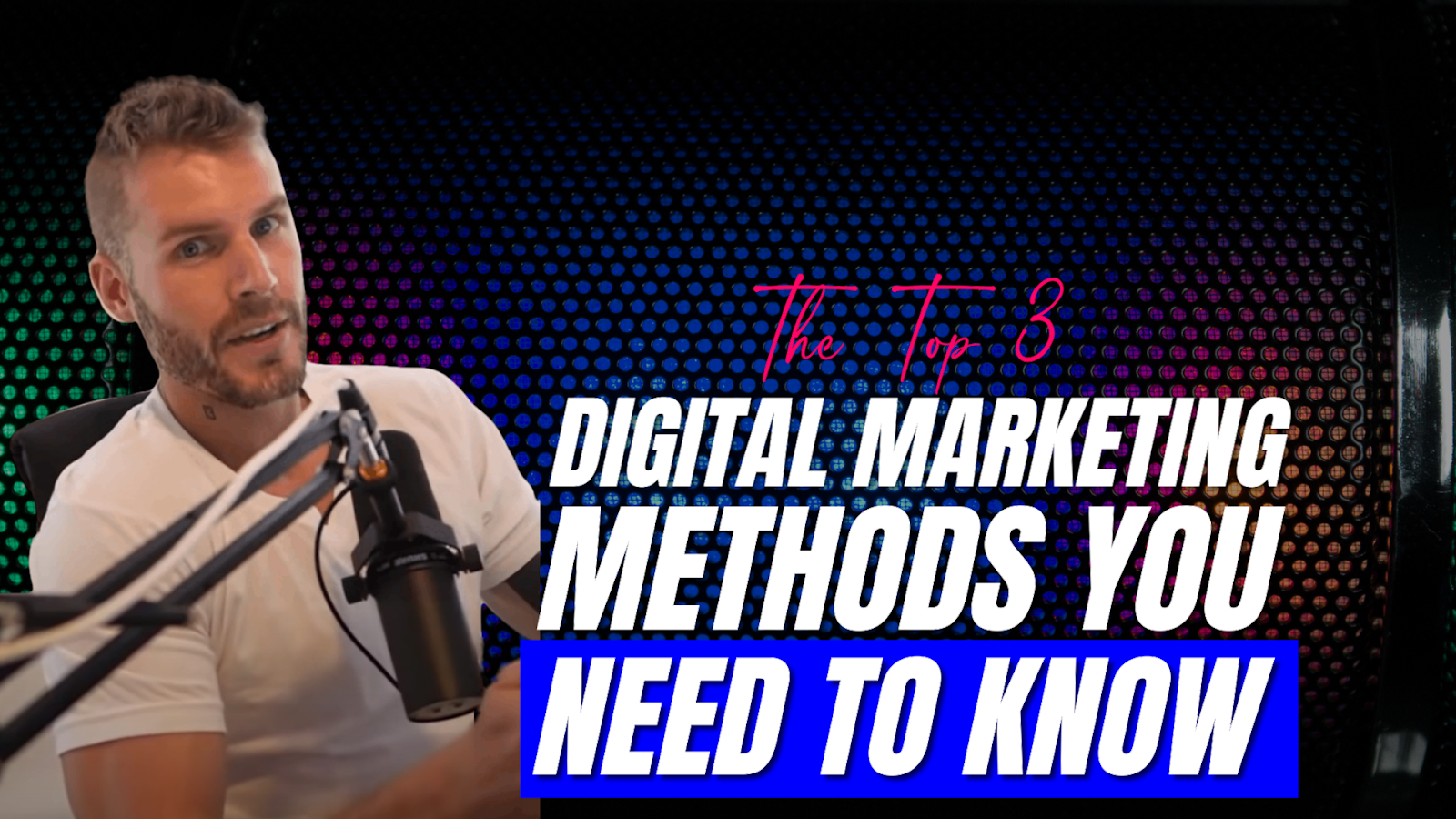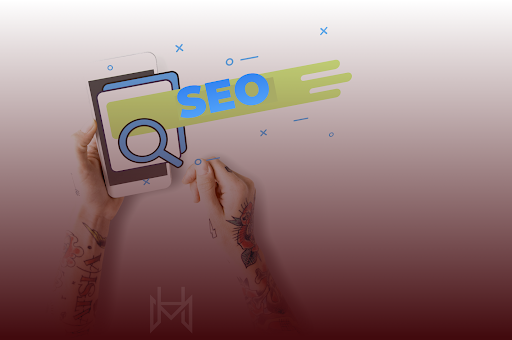
The Top 3 Digital Marketing Methods You Need to Know
Digital marketing uses online channels to promote a brand, products, or services. This is an umbrella term for different strategies curated to fit different target audiences. Digital marketing allows brands to create targeted content and interact with leads and customers.
Digital marketing is the new marketing standard as more people turn to online channels to research and make purchases. An effective digital marketing strategy means your brand appears in front of these people.
This article will examine the three most common digital marketing methods: social media marketing, pay-per-click advertising, and search engine optimization. We will discuss their benefits and how to set up a marketing plan under each.
Let’s get started!
1. Social Media Marketing

Social media marketing uses platforms like Facebook and Instagram to promote a brand, product, or service. It involves creating content to attract and engage with social media users.
In this section, we will discuss the benefits of social media marketing, how to set up a social media plan, and how to track the plan’s success. Finally, we will give you nifty tips to ease your social media marketing process.
Benefits of social media marketing
Social Media Marketing is an advantage to many brands, especially online ones. Here are some benefits they reap.
Increased brand awareness
Did you know there are over 4.26 billion social media users? Social media marketing puts your brand across the screens of these users. Once an audience knows your brand, converting them into paying consumers is easier.
Improved customer engagement
Social media provides an easy way for consumers to interact with a brand. They can leave comments, share, and directly message your brand.
Additionally, social media allows you to tackle customer issues in real-time, thus contributing to building brand loyalty.
Improved lead generation
Leads are interested in a brand and likely to convert to paying customers. You spark interest in potential buyers through social media content such as product reviews and customer testimonials.
Improved search engine rankings
Even though social media does not directly contribute to search engine ranking, social signals do. Social signals are the metrics generated when people interact with your content on social media. They indicate the level of interest people have in your brand.
Search engines use these metrics to determine the relevance of your brand. Therefore you will rank higher in SERPs.
How to set up a social media marketing plan
Here are crucial factors to consider when setting up a social media marketing plan.
Define target audience
This step involves identifying a group most likely to be interested in your brand. Sounds complicated, doesn’t it? Keep these factors in mind to simplify the process.
Demographics
This factor includes the age, gender, location, and income of social media users. You can find this information on market survey reports and website analytics.
Psychographics

This factor refers to people’s personalities, values, and interests. The psychographics of your audience informs you which content will resonate with them the most.
Pain points: This factor refers to the challenges your audience faces. Knowing these pain points allows you to create social media content explaining how your brand is well suited to solve them.
Choose the right social media platform
You need to do more than identify your target audience. You have to meet them where they are, which involves choosing the right platform. Additionally, select a forum that aligns with your brand’s personality.
For example, Instagram is a visual platform that prioritizes video content, while Twitter prioritizes text-based content.
If you select multiple platforms, avoid publishing the same content across all. Personalize your content according to the demographic of your audience on those platforms.
Establish your goals and objectives
Part of setting up a plan is determining what you want to achieve. Without goals, you have no way to measure the success of your strategy. Here are some common objectives you can draw inspiration from.
- Increase brand awareness.
- Generate leads.
- Drive website traffic.
- Increase sales.
- Deliver customer service.
Create a content strategy

After identifying your target audience, the platform to use, and your goals, it’s time to map out the content you will publish. Here are some steps to guide you when creating your strategy.
- Conduct a content audit by reviewing your current content and seeing what works best. This audit will inform you of the kind of content your audience interacts with the most.
- Choose the correct content type based on your audience and the platform you intend to use. These content types include blog posts, videos, or infographics.
- Develop a content calendar that maps out the topics and schedule you will publish. A calendar will help you stay consistent and make you a reliable tool for your audience.
- Keep track of your analytics and adjust the content as needed.
How to measure social media marketing success
Measuring social media marketing performance involves keeping track of performance indicators. Here are some to keep in mind when evaluating your strategy.
Key performance indicators
Key performance indicators are the metrics that inform you how successful your social media marketing strategy is. Here are common KPIs you should monitor when tracking your analytics.
1. Reach
This metric refers to the people who have seen your content on social media. You can tailor content around the demographic with the highest reach and make them your primary target audience.
2. Engagement
This metric refers to people who interact with your content by sharing, commenting, liking, or clicking on them. Unlike reach, which only tells you who sees your content, engagement tells who resonates with it. These people are your best leads, and you should focus more on converting them to buyers.
3. Conversion rate
This metric refers to people who act after interacting with your content. Such actions include signing up or making a purchase. Conversion rates are the best way to know whether your strategy effectively drives business results.
4. Customer acquisition cost (CAC)
This metric refers to how much your social media marketing strategy costs to gain new customers. Knowing this cost helps determine your strategy’s return on investment (ROI). This information will help you decide whether to change your plan or abandon it altogether if it’s not profitable.
5. Follower growth
This metric informs you how many new followers your content is generating. It helps you track the effectiveness of your strategy toward your goal of attracting new audiences.
Tips for social media marketing
Following a social media marketing plan is challenging, especially when you’re a new brand trying to reach new audiences. Here are some nifty tips that will ease the process.
Be consistent
Consistency is a crucial aspect of an effective strategy. Why? Because social media users love reliable brands. Consistency involves posting at regular intervals and at specific times. Your audience learns to expect new content from you and thus builds their trust in your brand.
Engage with your audience
The goal of social media marketing isn’t only for your audience to interact with your content. You have to interact with them too. Respond to comments and messages you receive from them. You should also participate in relevant conversations on social media that your target audience is passionate about.
Create diverse content
Consider posting content in various formats to keep your audience engaged and entertained. Additionally, content formats such as images and videos are better to share than textual formats.
Consider influencer marketing
Influencers are famous social media personalities. Some of them have the power to influence the purchasing decisions of their followers. Consider collaborating with influencers relevant to your brand to reach new audiences. If done right, influencer marketing is an excellent tool for driving conversions.
Humanize your brand

Humanizing a brand means creating a personable social media presence that audiences feel comfortable interacting with. Being relatable is an excellent tool for building brand loyalty. Here are some ways to achieve this.
- Use a conversational tone in your content.
- Engage with your audience’s comments and messages.
- Showcase reviews and testimonials your audience posts about your brand.
- Support social causes that align with your brand, such as petitions. This method shows you care more than just a profit.
- Include emotions in your content, such as humor and empathy.
- Share behind-the-scenes content, and don’t be afraid to include a blooper.
2. Pay Per Click Advertising
Pay-per-click advertising is a digital marketing method that involves advertisers paying every time someone clicks on their ads. This section will review how PPC works, its benefits, and the best practices for crafting a PPC strategy.
How pay-per-click advertising works
PPC advertising works on an auction model. What does this mean? Advertisers bid on keywords and phrases they want to target. A bid is an amount an advertiser is willing to pay for a click on their ad.
When someone enters a search query, the search engine checks to see available bids relevant to the question. If there are, it selects the best one and displays that ad on the SERP. If the user clicks on that ad, then the advertiser pays the amount they bid.
The most popular PPC ad network is Google’s own Google Ads.
Benefits of pay-per-click advertising

Pay-per-click advertising is beneficial to brands looking for a cost-effective digital marketing method. Here are some advantages of PPC.
PPC is fast
Setting up a PPC ad campaign is straightforward, and the results are immediately evident. For example, creating a PPC campaign on Google Ads involves:
- Choosing a campaign type.
- Refining your target settings, such as location and devices.
- Set your budget.
- Input your destination URL that works as the page users land when they click your ad.
- Build your ad.
Once your ad goes live and the algorithm chooses to display it, it takes a short time to appear on the SERP and get clicks.
PPC results are easy to measure
All popular PPC platforms, such as Google Ads and Bing Ads, have tools dedicated to tracking the metrics of your ad campaigns. These platforms display clicks, impressions, and click-through rates to help you evaluate the success of your ads.
PPC gives you complete control over ad campaigns
It is easy to tweak different ad settings at any time. You can change the ad copy, targeting preferences and even turn the ads on and off.
In addition to these settings, PPC allows you to test different ads to determine their effectiveness.
PPC is cost-effective
You only pay for clicks on your ads. This means every click is valuable, mainly if it results in a conversion. Additionally, PPC lets you set budgets you’re willing to spend on these campaigns.
PPC lets you reach new audiences
Pay-per-click presents your ads to people who may have never heard of your brand. In the last month, 88.6 billion people used Google. Imagine the potential reach your ad can achieve with those statistics.
Types of pay-per-click advertising
There are different types of PPC ads based on their placement and formats. Here are some of them.
Paid search ads
Search ads are the most common form of PPC advertising. They appear within the first five search engine results and on the right-hand side of the SERP. They are marked with the word “ad” to indicate sponsored content.
They usually consist of a headline, two lines of text, and a URL without visual elements.
Display ads
Display ads appear on websites, apps, and digital platforms as banners. These banners may contain images, videos, and texts about a brand. These visual elements should follow Google’s image ad requirements for approval.
These ads help increase brand awareness, and you can target them to reach specific users based on their interests and behavior.
Social media ads
Social media ads are paid adverts placed on social platforms such as Facebook. Social media platforms present your ads to users based on their interests and demographic. Simply put, your ad will appear to people interested in what your brand offers.
Shopping ads
Shopping ads are specifically geared toward people searching for products. These ads contain price details, offers, and product images. They are usually presented in a grid showing similar product comparisons from various vendors.
Instream ads
Instream ads are adverts that appear in the middle of videos. For example, the ad that occurs before and in the middle of a Youtube video is an instream ad.
Advertisers should be careful to create instream ads as entertaining as the videos they typically watch. Otherwise, viewers find them annoying.
Pay-per-click advertising best practices
An effective PPC strategy follows some practices to ensure it’s running smoothly. This section has some of them you can apply to perfect yours.
Conduct thorough keyword research
Keyword research is crucial for a successful PPC campaign. Your ad’s relevance relies on you choosing the right keywords that your target audience uses the most. Remember that people’s interests change frequently. Constantly research ongoing trends to allow you to change keywords to what is relevant at the time.
Keyword tools such as Google Keyword Planner, SEMRush, and Ahrefs help you find keywords people search for the most.
Create compelling ad copy
Your ad copy is the content that makes the first impression and determines whether people are interested enough to click on your ad. You must create an engaging ad copy that tells an audience how you will solve their pain points.
Remember to use strong headlines, straightforward language, and a strong CTA to compel your audience to click.
Optimize your landing page
The landing page is the first thing people see when they click on your ad. To begin, your landing page should be fast and mobile-friendly. Slow web pages frustrate users and significantly contribute to high bounce rates.
Additionally, create different landing pages for different keywords. Avoid sending everyone to the same page. For example, the keywords “price” should send users to your online store. Keywords containing “contact” should send users to your contact page.
Regularly monitor your campaign performance
PPC is not a guessing game. You need to stay on top by evaluating your campaign performance regularly. Keep track of metrics such as click-through rate, conversion rates, and cost per click to optimize your PPC campaigns.
3. Search Engine Optimization

Search engine optimization is improving a website’s technical structure and content to improve its visibility and search engine ranking. We will look at the types of SEO and how to create an effective SEO strategy in this section.
Finally, we will inform you of common mistakes that hurt your efforts to rank high on SERPs.
Types of SEO
There are two types of SEO you should concentrate your efforts on. These are:
On page SEO
On-page SEO refers to the optimization of a website’s content and structure. Optimizing on-page SEO aims to make it easier for web crawlers to go through and index your website. Here are some elements that count in this type of SEO.
- Title tags.
- Meta description.
- Header tags.
- Page URL.
Off-page SEO
Off-page SEO refers to optimizing external factors that impact ranking. The goal of this type of SEO is to build brand authority. Off-page SEO is the promotion of your content around the internet. Some of these external factors include:
- Link building.
- Social media marketing.
- Guest blogging.
- Content marketing.
- Online directories.
How to create an effective SEO strategy
Follow these steps to create an effective SEO plan.
Conduct keyword research
Keywords are phrases your audience uses when searching on search engines. Relevant keywords are crucial because they determine where search engines rank you on the SERP. Your keyword research process should follow the following guidelines.
- Brainstorm keyword ideas.
- Use keyword research tools such as SEMRush and Ahrefs.
- Analyze your target audience’s intent.
- Refine your keywords.
- Update your keywords frequently.
Build high-quality backlinks
Backlinks are hyperlinks found on other websites that lead users to your own. Google considers quality backlinks as an indicator of your website’s credibility. This means that the more quality backlinks a website possesses, the more trustworthy Google believes it to be as a source of information.
Typically, quality backlinks share specific characteristics, such as coming from authoritative websites, incorporating your keywords in their anchor texts, targeting the same audience as your website, and linking your content infrequently.
To build high-quality backlinks, follow these steps.
- Ask other advertisers to link to your content on their websites.
- Create linkable assets for advertisers to refer their audience to check out. Assets such as infographics, case studies, and tutorials are valuable and will earn you backlinks.
- Be a guest blogger on another advertiser’s webpage to reach new audiences and insert links to your website.
- Track broken links on other websites and contact the advertisers to replace them with your links.
Use social media for SEO
Leverage the power of social media to promote your marketing campaigns to new audiences. Social media signals such as engagement rates and organic traffic influence how search engines rank you on the SERP.
Social media impacts SEO by:
- Increasing traffic.
- Increasing brand awareness.
- Building backlinks.
- Increasing your brand’s credibility.
Common SEO mistakes to avoid
Like many practices, some mistakes tank your SEO efforts. Here are some to avoid.
Keyword stuffing
Before 2013, keyword stuffing was a way to trick search engines into ranking your website higher. Since then, Google has taken a stand against this practice. Their web crawlers understand keywords based on context.
Google recognizes stuffing keywords to rank higher as spam. The search company states, “Sites that violate our policies may rank lower in results or not appear at all.”
Ignoring mobile optimization
It is crucial to ensure your website works smoothly on mobile, given that over 60% of the population uses a phone to go online. In addition to working smoothly, the user experience should also be pleasant to improve engagement and ranking.
Failing to update old content
Once a web page is indexed, web crawlers move on and rarely return to the page unless triggered. As a consequence, these web pages rank lower with time. Updating old content is a great way to call their attention to these pages. Additionally, you can include higher-ranking keywords and update outdated information that harms your SEO efforts.
Focusing on search engines only
Yes, SEO refers to ranking on search engines, but you shouldn’t ignore the humans you’re creating content for. Focus on creating high-quality content that provides insightful information. You can create new content or improve existing ones with researched data.
Conclusion
Digital marketing is vital for any brand looking to reach new audiences and convert them into paying customers. The most common digital marketing methods are social media marketing, pay-per-click advertising, and SEO.
Each of these methods involves delicate strategies that ensure you achieve your objectives. Each of them has benefits that set them apart and target different demographics. Use the information in this article to help you select your brand’s best digital marketing method.
